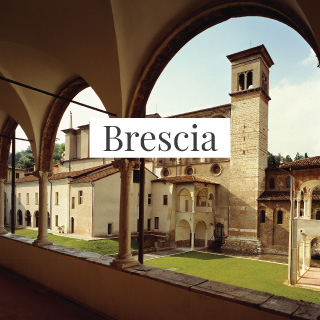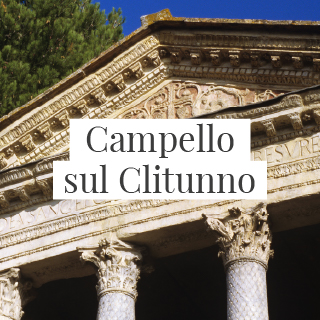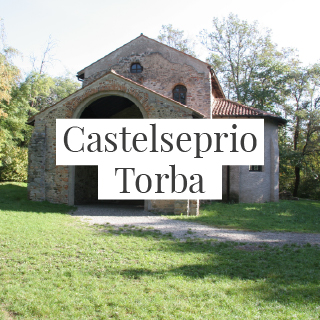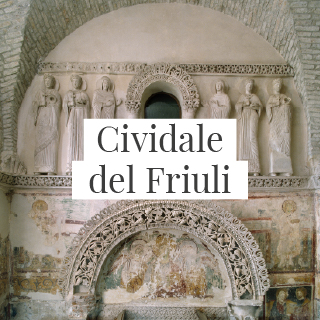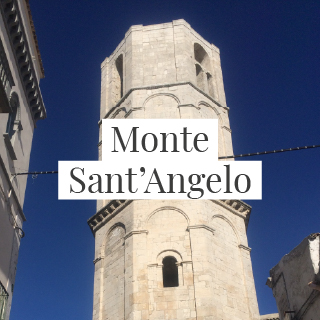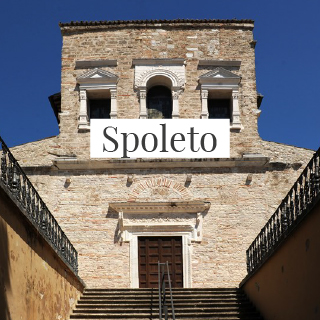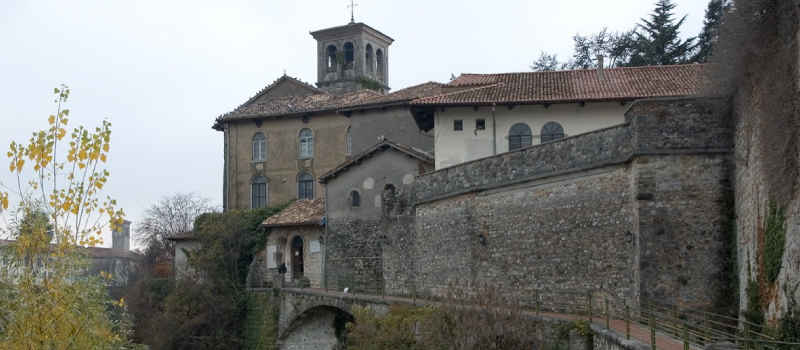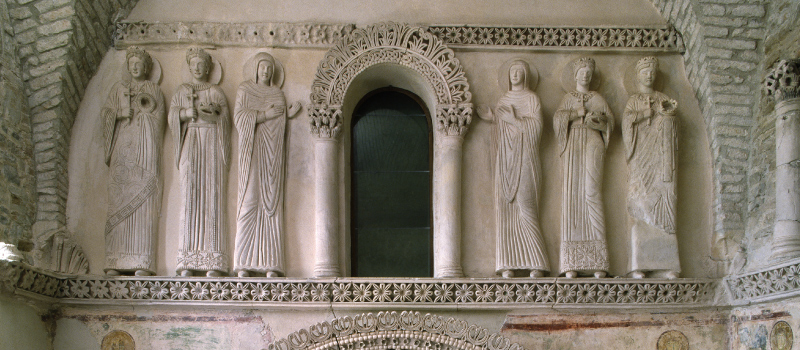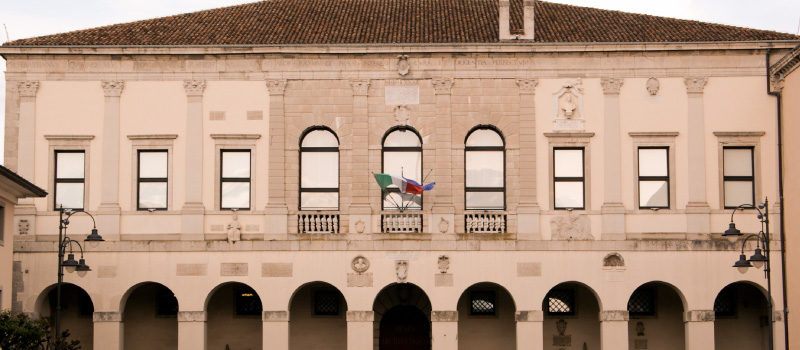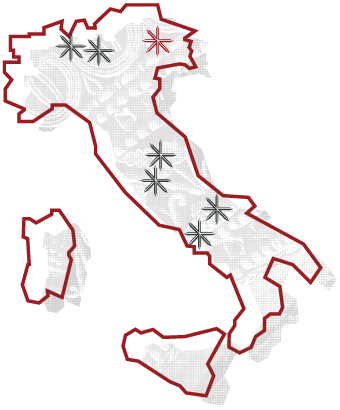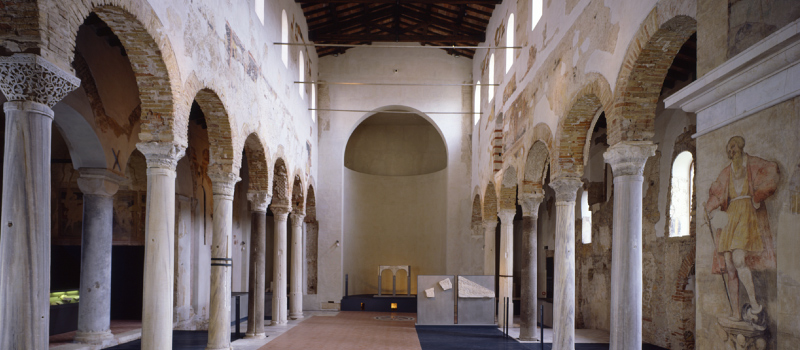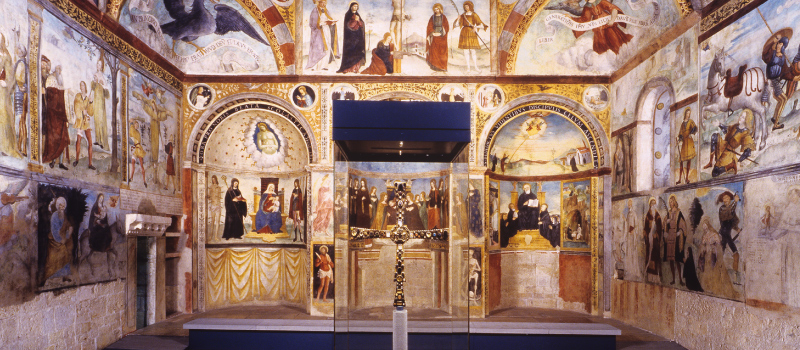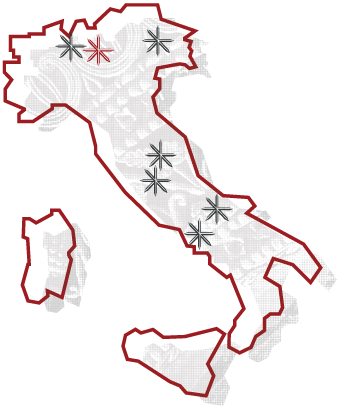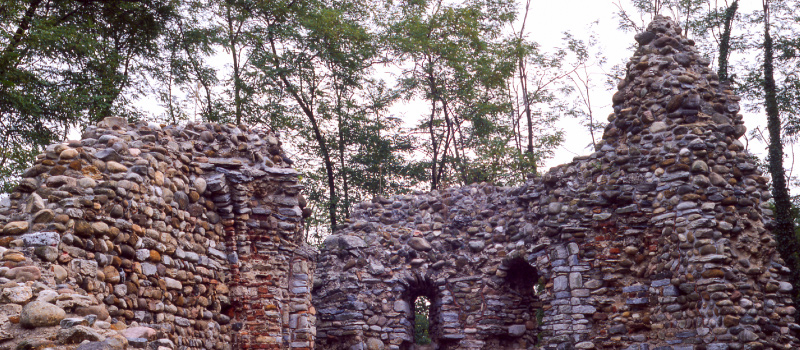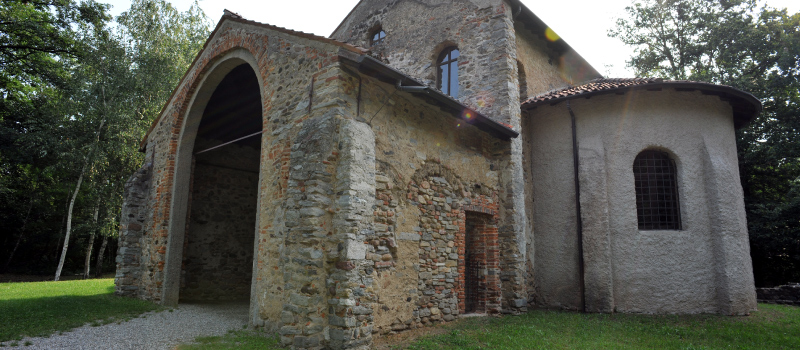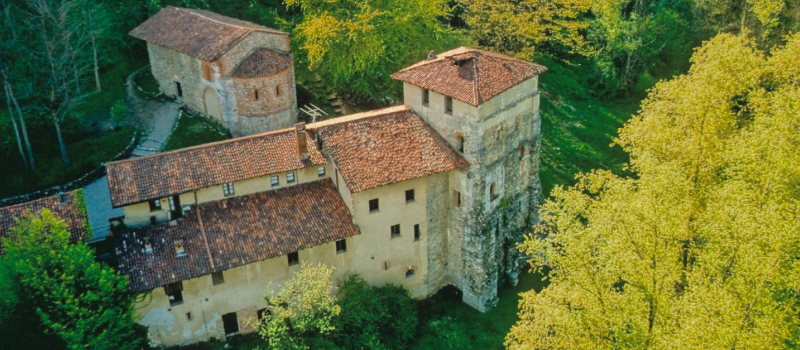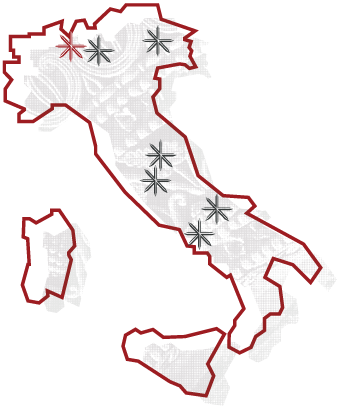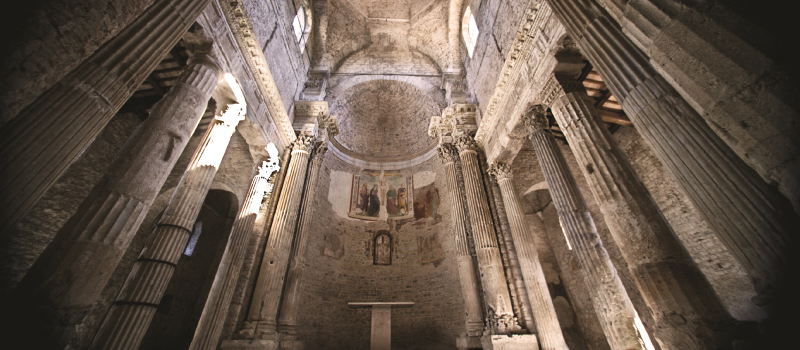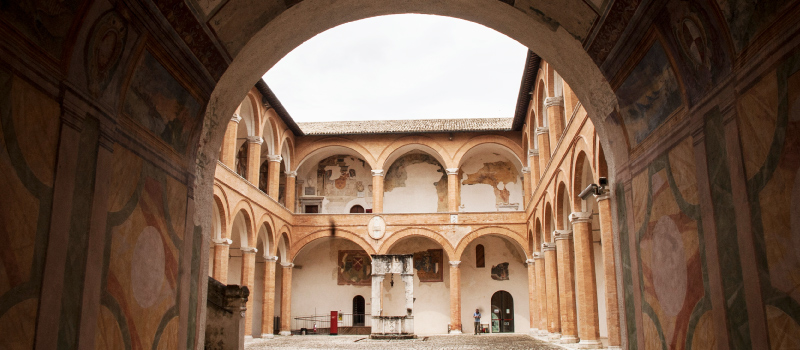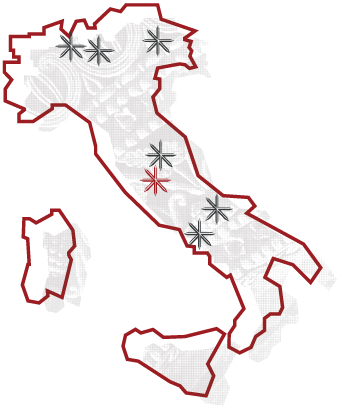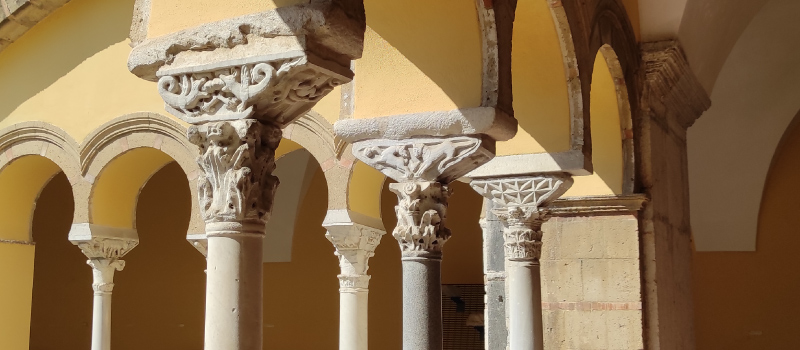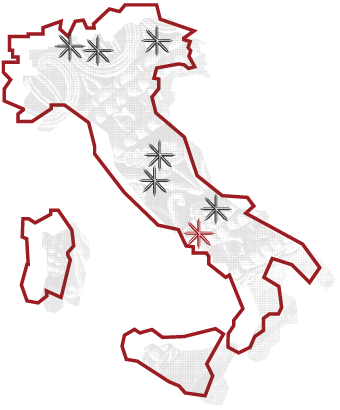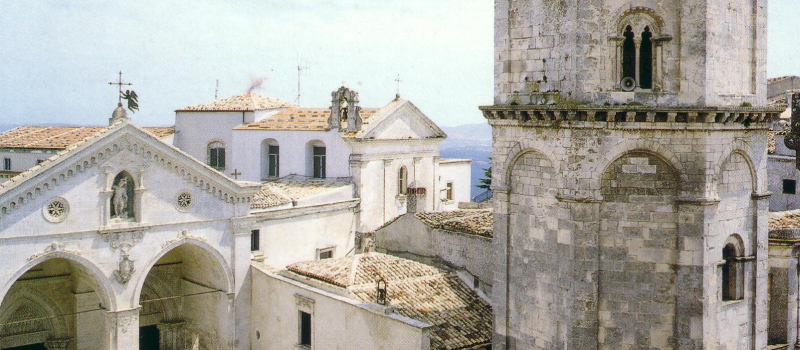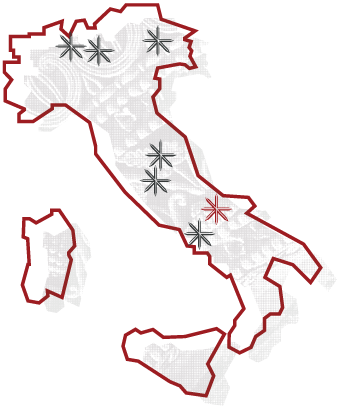Church of Santa Sofia
The Spiritual treasure
of the Lombards
The building was already completed in May 760, when relics of the twelve martyrs gathered from various Italian cities were placed in the main apse.
In 768 the church also received the relics of San Mercurio, and then those of thirty-one martyred saints and confessors. Arechis II built a female monastery next to the church, entrusted to his sister, the abbess Gariperga. Evidence of the monastery may be seen in the cloister, today an integral part of the Samnium Museum.
Construction of the church of Santa Sofia
A monastery – today the seat of the Samnium Museum – was annexed to the church. It has a cloister rebuilt in Romanesque times, in which a number of original Lombard components were reused.
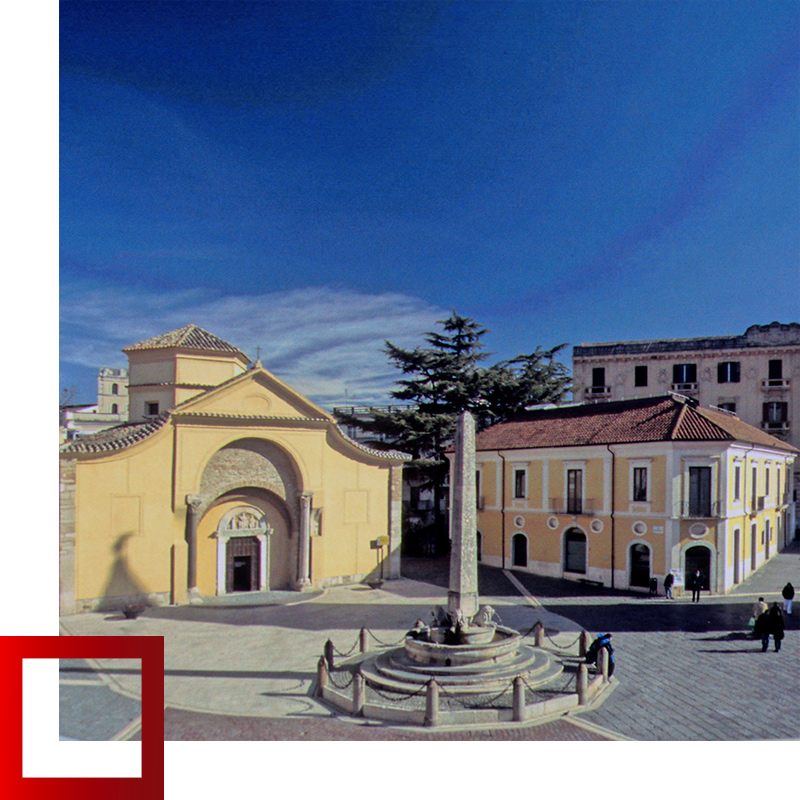
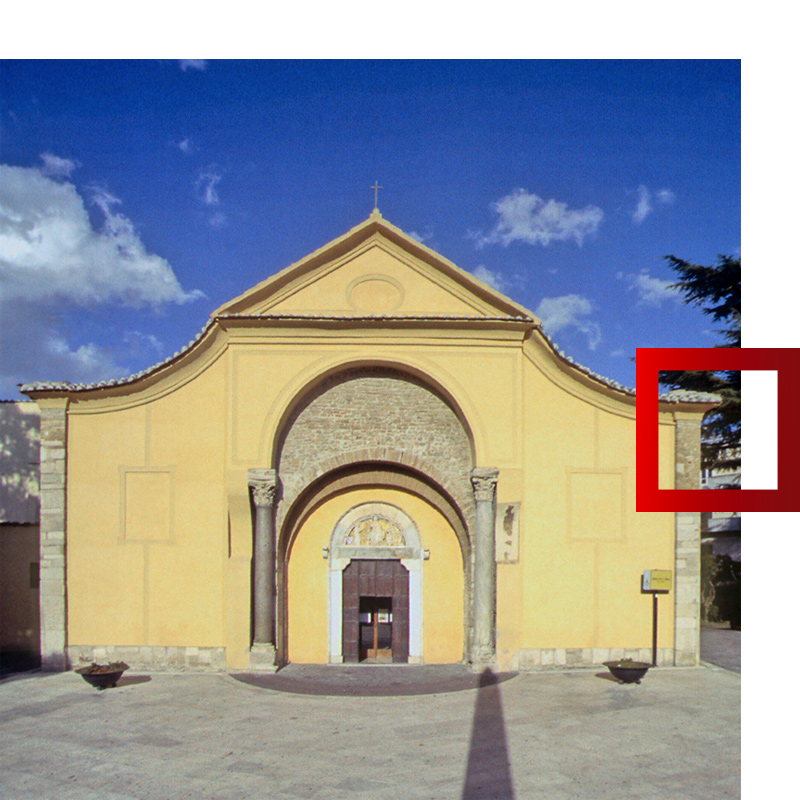
The façade
The central part of the facade has a fine portal, with marble jambs and architrave, surmounted by a lunette enriched with beautiful sculptures in high relief on a golden background.
On the intradoses of the arches flanking the main portal, there is a rare survival of the painted decoration which probably covered the external facing or the walls of a narthex in the Lombard building.
Architecture
Its singular stellar shape, converging from the entrance area towards the three apses opposite, constitutes a rare example of Lombard architecture.
The central plan, probably reflecting Byzantine influence, has an irregular (but bilaterally symmetrical) perimeter that features a star pattern and three small apses.
The complexity of the internal space is enhanced by two concentric ambulatories. The inner one, punctuated by a row of columns, defines a hexagon on which the dome is set; this was rebuilt following the 1688 earthquake and is higher than the original one. The external ambulatory is decagonal in shape and punctuated by square pillars.

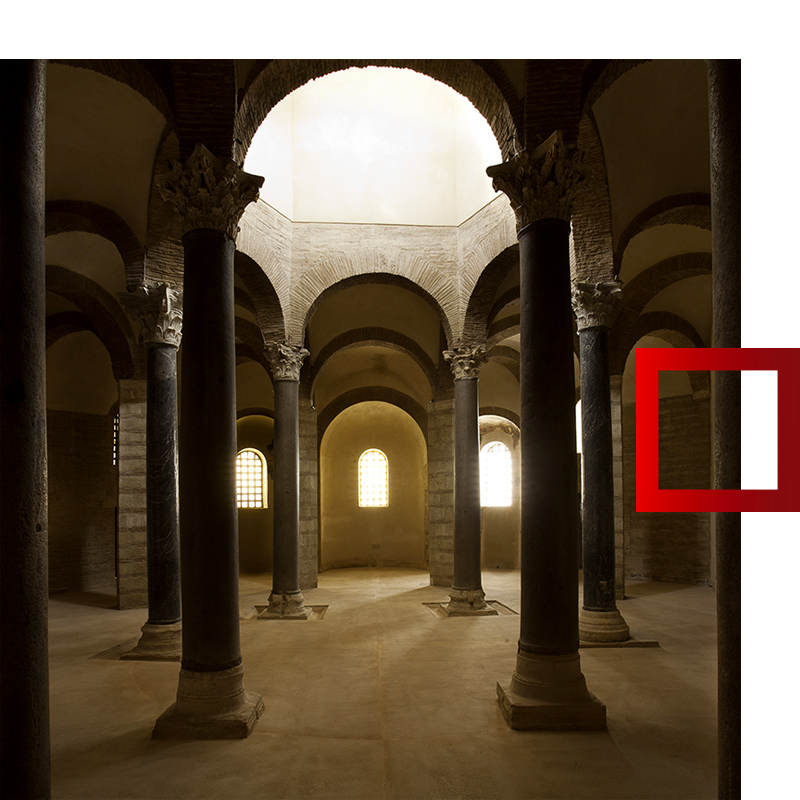
Columns
The eight square pillars – made of alternating courses of limestone blocks and solid bricks – and the two reused columns with ancient capitals that form the decagon are surmounted by Early Medieval impost blocks, eight of which are decorated with elongated spindles and pairs of beads.
The numerous ancient building materials reused in Santa Sofia fulfil structural, not just decorative, purposes – evidence of the all-round respect in which these relics of the past were held.
Frescoes in the apses
The original cycle, unanimously dated by critics to the 8th century, when the building itself was constructed, must have focused on episodes from the life of Christ, in particular his incarnation and childhood. In the part to the east with three apses, scenes that demonstrate the craftsmen’s expertise are preserved.

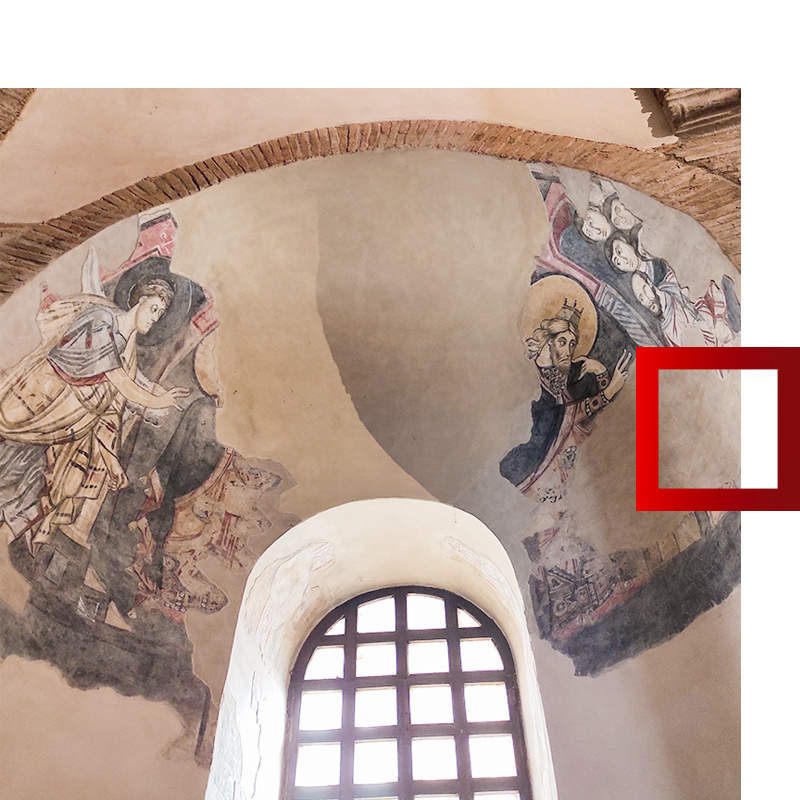
Frescoes of the Annunciation to Zechariah
The event is shown in two scenes: on the left the Archangel Gabriel, with arm stretched forward and hand gesturing, announces his future paternity to Zechariah. In the scene on the right, Zechariah, rendered mute by the angel due to his incredulity, indicates his mouth to the faithful.
The episodes of the Annunciation and the Visitation are depicted in the small southern apse. These stories follow their chronological order in the Gospel, so that the cycle is in fact a precise illustration of the first chapter of Luke. In the Visitation “Elizabeth is caught in the act of touching the pregnant belly of the Madonna, having prostrated herself almost on her knees in front of her, at the same moment in which Mary caresses her face as if to kiss her and, holding her by the head with her hand under her cheek, forces her to get up” (Bologna).
Visit
Information and contacts
Piazza Santa Sofia, 82100 Benevento BN
Tel. 0824 21206
Mail. info@santasofiabenevento.it
Website
VUOTO
Tickets
Free admission (Tourist visits are not allowed during religious services)
Opening hours
Monday: 8:00 AM – 12:00 PM / 4:30 PM – 8:00 PM
Tuesday: 8:00 AM – 12:00 PM / 4:30 PM – 8:00 PM
Wednesday: 8:00 AM – 12:00 PM / 4:30 PM – 8:00 PM
Thursday: 8:00 AM – 12:00 PM / 4:30 PM – 8:00 PM
Friday: 8:00 AM – 12:00 PM / 4:30 PM – 8:00 PM
Saturday: 8:00 AM – 12:00 PM / 4:30 PM – 8:00 PM
Sunday: 8:00 AM – 12:00 PM / 4:30 PM – 8:00 PM
